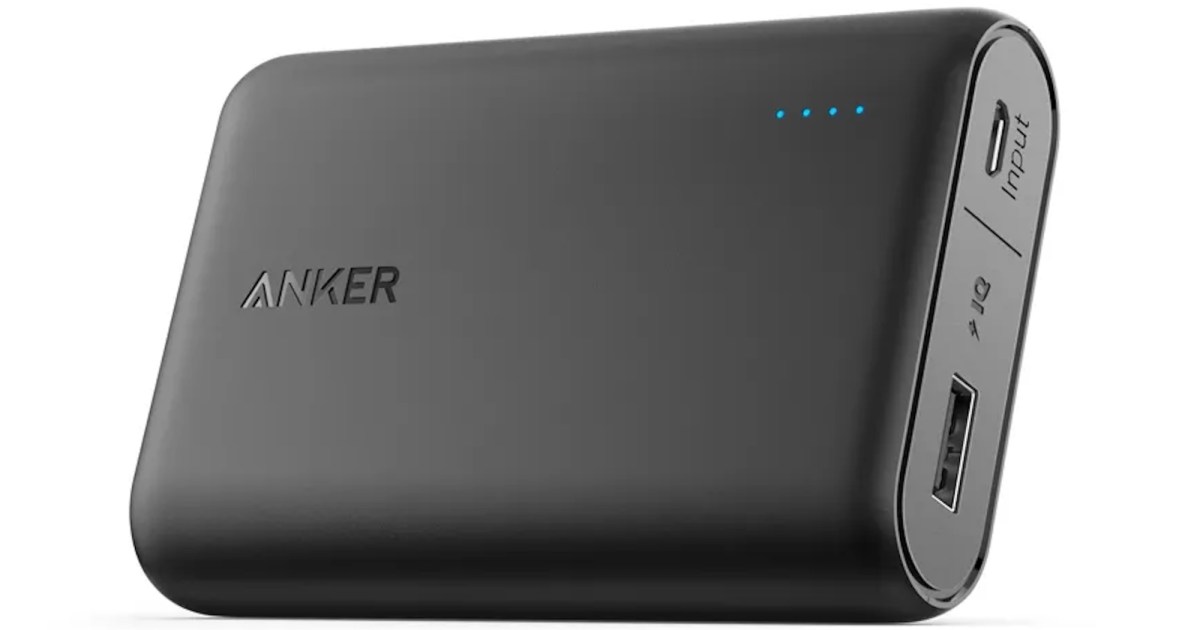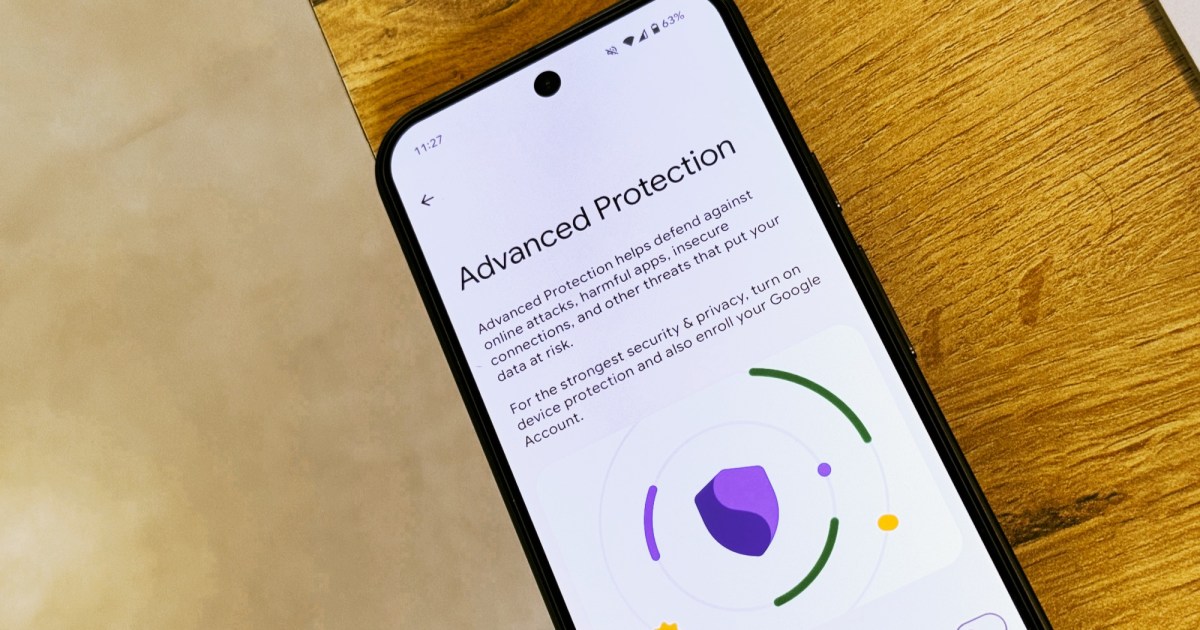Since the launch of the pioneering iPad, Android tablets have consistently faced an uphill battle for market dominance. A persistent lack of applications optimized for larger screens means the Android tablet experience often feels less polished than its Apple counterpart. This challenge also extends to the burgeoning foldable phone market, where many apps fail to leverage the expanded display real estate effectively. However, Android tablets have shown strength in productivity and multitasking, with innovations like Samsung’s DeX desktop mode and OnePlus’s Open Canvas system on the OnePlus Pad 3 offering glimpses of a more versatile future.
With the advent of iPadOS 26, unveiled at WWDC 2025, Apple has significantly elevated the iPad’s capabilities, particularly with devices like the powerful iPad Pro M4 (2024). This update has transformed the iPad experience, and after extensive use, it’s clear there are several crucial elements that Google should urgently consider implementing across all Android tablets to enhance their competitiveness and user value. These are the key iPadOS features Android tablets need.
Enhanced Windowing System and App Optimization
Both iPads and Android tablets have historically grappled with a common issue: they are fundamentally mobile-first platforms adapted for larger displays. Consequently, neither has fully replicated the seamless desktop experience found on Windows tablets, which leverage a desktop-class operating system optimized for tablet form factors. The new windowing system in iPadOS 26 dramatically alters this, aligning the iPad more closely with the Mac experience. Interestingly, Google has also announced a new windowing system for Android tablets, slated for Android 16. This system, drawing inspiration from Samsung DeX, aims to overhaul the Android tablet interface but, perplexingly, will not be available on foldable phones initially; users will need to connect a compatible Android phone to an external display to access similar functionality. [internal_links]
 iPad Pro running iPadOS 26 displaying advanced multi-window multitasking capability
iPad Pro running iPadOS 26 displaying advanced multi-window multitasking capability
This selective implementation means multitasking on Android tablets might remain inconsistent, as manufacturers can opt to use Android 16’s desktop mode, an alternative, or none at all. Based on current Android desktop mode implementations, it’s evident that beyond just the feature itself, Google must actively incentivize developers. There’s a critical need for applications and experiences that can fluidly transition from a touch-centric tablet interface to a productive desktop mode when docked or paired with keyboard accessories.
 Samsung Galaxy Tab S10 Ultra showcasing DeX mode with multiple apps for Android tablet productivity
Samsung Galaxy Tab S10 Ultra showcasing DeX mode with multiple apps for Android tablet productivity
The Intuitive Menu Bar and Revamped Cursor
The introduction of a dedicated menu bar and a refined cursor in iPadOS 26 has proven surprisingly pivotal in creating a more desktop-like environment. Within a short period of use, the familiarity and utility of these features become apparent, making navigation and command access more intuitive. This shift makes the iPad feel less like an oversized iPhone and more like a compact Mac, directly addressing long-standing criticism from users and media requesting better utilization of the iPad’s increasing processing power. [internal_links]
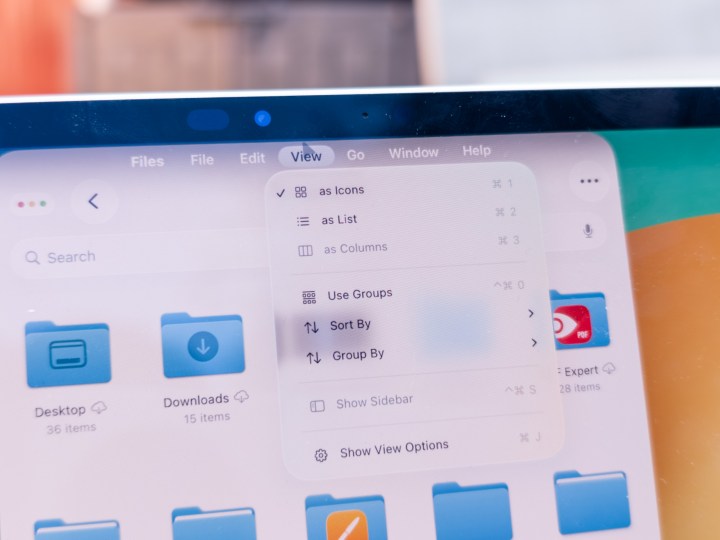 iPadOS 26 Files app on iPad Pro M4 demonstrating the new Mac-like menu bar for enhanced navigation
iPadOS 26 Files app on iPad Pro M4 demonstrating the new Mac-like menu bar for enhanced navigation
The enhanced Files and Preview apps on iPadOS 26, now optimized versions of their Mac counterparts, exemplify this by bringing powerful desktop features to the tablet. While iPadOS 26 is new, and widespread app adoption will take time, every application already benefits from a system-level menu bar. This bar is populated with familiar commands found in Mac applications, making it instantly recognizable even for Windows PC users. Android tablets would greatly benefit from a similar, universally implemented menu bar system to improve app discoverability and functionality in a desktop or productivity context.
Seamless Desktop-Tablet Transition
Apple’s iPadOS 26 has achieved a long-sought-after goal for tablet manufacturers: an experience that feels fluid and natural, whether used with a keyboard or as a standalone touch device. With a keyboard attached, the iPad Pro M4 running iPadOS 26 is powerful enough to replace a Mac for a multitude of tasks, yet it remains perfectly intuitive for finger-based interaction. This seamless transition is a critical area where Android tablets can improve. [internal_links]
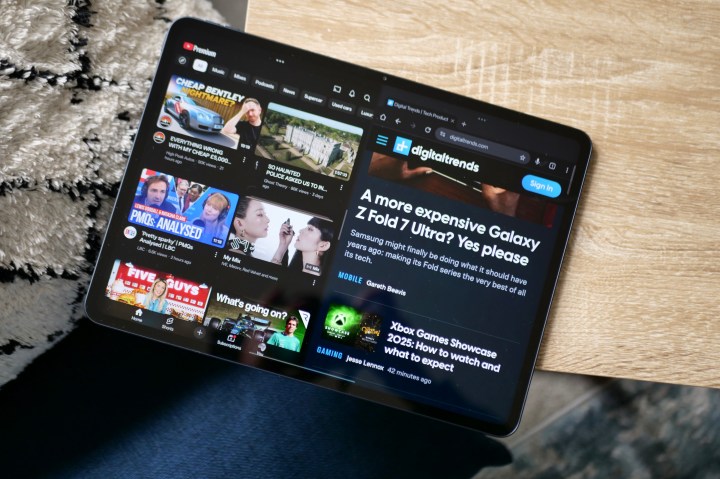 OnePlus Pad 3 demonstrating its Open Canvas split-screen multitasking feature for Android tablets
OnePlus Pad 3 demonstrating its Open Canvas split-screen multitasking feature for Android tablets
Consider high-end Android tablets like the Galaxy Tab S10 Ultra with its DeX mode, or the OnePlus Pad 3 with its innovative Open Canvas multitasking. While both are excellent devices offering unique Android experiences, their desktop modes often don’t match the sheer productivity or polish of a dedicated PC or Mac environment. The transformation with iPadOS 26 is palpable; the iPad Pro has quickly become a favored compact laptop, significantly boosting productivity. Android needs to strive for this level of effortless transition between tablet and desktop paradigms.
A Superior Keyboard Accessory Ecosystem
Even if Google successfully incorporates iPadOS 26-like software enhancements, Android tablets frequently fall short in another crucial domain: accessories, particularly keyboards. The Apple Magic Keyboard, available for a wide range of iPads, effectively transforms the tablet into a mini-laptop. Its design, which uses magnets to suspend the iPad above the keyboard, brings the display closer to eye level, mimicking a traditional computer’s ergonomics and making it ideal for mobile productivity. [internal_links]
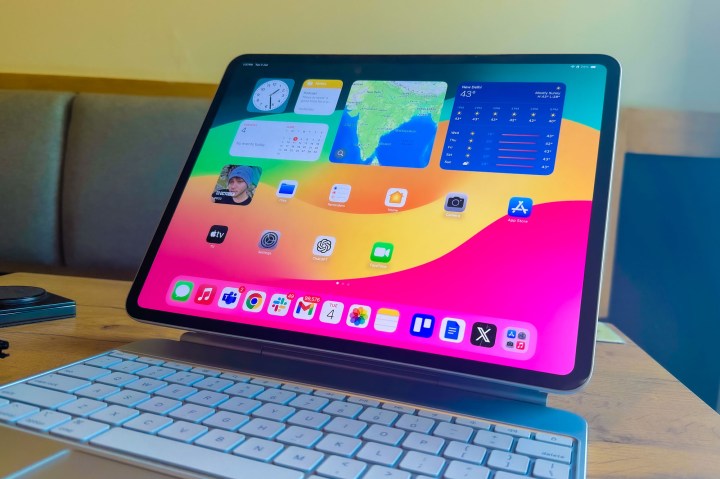 Sleek side profile of the iPad Pro M4, highlighting its design suitable for keyboard accessories
Sleek side profile of the iPad Pro M4, highlighting its design suitable for keyboard accessories
Many Android tablet keyboards adopt a Smart Keyboard or Folio case design with an integrated keyboard. While functional on a flat surface, these often prove unstable and ineffective when used on a lap, such as in a car or on a train. The Magic Keyboard, by contrast, securely holds the iPad in place, making it a genuinely practical small computer for use in confined spaces.
 Galaxy Tab S10 Ultra with its Book Cover Keyboard Slim, an example of Android tablet keyboard accessories
Galaxy Tab S10 Ultra with its Book Cover Keyboard Slim, an example of Android tablet keyboard accessories
Tablets have always navigated a trade-off between the portability of a phone and the capability of a laptop. Microsoft has made strides in bridging this gap with Windows on tablets, and Apple has now taken a significant leap with iPadOS 26. For Android tablets to truly compete as productivity powerhouses, Google and its hardware partners must also foster an ecosystem of high-quality, thoughtfully designed accessories.
In conclusion, iPadOS 26 introduces a suite of enhancements—from a more capable windowing system and intuitive menu bar to a seamless desktop-tablet transition and superior keyboard accessories—that significantly boost the iPad’s productivity credentials. These are not just iterative improvements; they represent crucial lessons for Google and Android tablet manufacturers. To elevate the Android tablet experience and offer a truly competitive alternative for users seeking productivity on the go, Google should prioritize the integration of similar functionalities and inspire a more robust accessory ecosystem. A holistic approach, encompassing software innovation, hardware excellence, and strong developer support, is paramount for the future of Android tablets.






